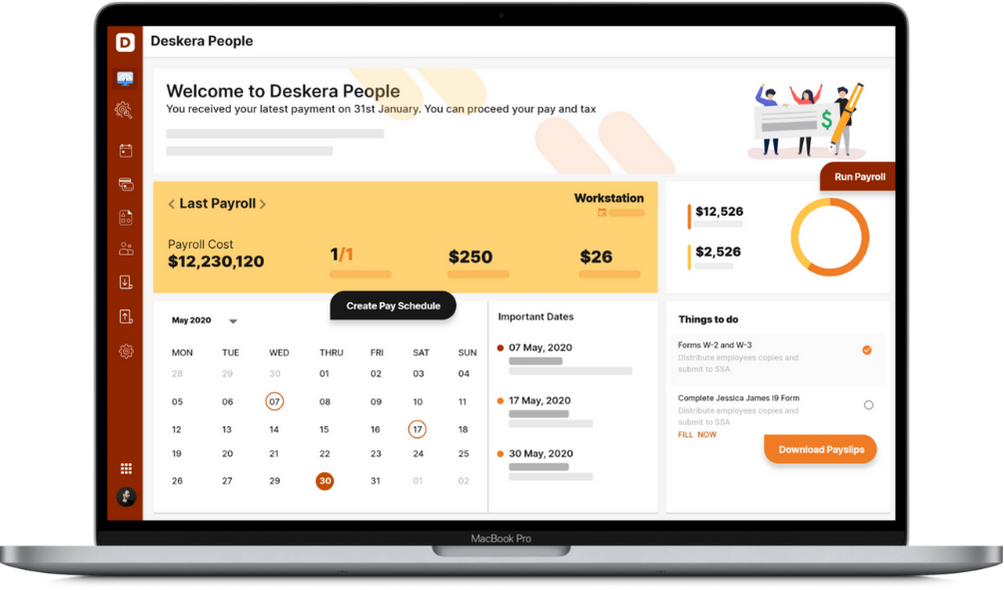A health insurance deductible is the amount the insured individual pays for the received healthcare before the insurance comes into play. Deductibles are an integral part of the cost sharing model of health insurance.
It is essential we understand the various components attached to it. While most companies offer health insurances with the cost sharing option, you must learn what the process entails.
The deductible being a critical aspect of the cost sharing will be the main focus of this article.

In this post, we shall grasp the concepts as mentioned here:
- What is Cost sharing?
- What is Health Insurance Deductible?
- Types of Deductibles
- Difference between Individual and Family deductibles
- Health insurance and Deductibles: How are they related?
- How do Deductibles work?
- Average and High Deductible Plans
- Eligibility
- Coverage
- Cases where you don't pay the Deductible
- Deductibles that do not apply
- Know about Preventive Care
- FAQs
- Conclusion
What is Cost sharing?
An individual and their health insurance company share the cost of their medical expenses during an entire year, which is called cost-sharing. Cost sharing can be advantageous for both the insured and the insurer. To prevent the overuse of healthcare services, they are required to pay a portion of healthcare costs as part of the health insurance plan. The insured receives lower premiums and thus, can benefit from cost sharing.
Copay, Deductibles, and Coinsurance are the three types of cost sharing. Let’s learn what deductibles in insurance are.
What is Health Insurance deductible?
Health insurance deductibles are fixed amounts a person has to pay each year for health care services prior to a health plan providing coverage.
According to your health insurance plan, the deductible amount may vary. Generally, when you have a lower deductible, you will have a higher monthly premium. Health insurance premiums are the amount you pay to an insurance company each month to receive coverage.
According to your insurance policy, you may be required to pay a deductible of hundreds to thousands of dollars. The policies typically renew them annually.
You may be required to cover some of your healthcare costs even after paying off your deductible. Copayments apply to most insurance plans, meaning the insured has to pay a set dollar amount as their share of the costs of certain services. Coinsurance payments also are standard, which entail a set percentage of the total cost being the responsibility of the insured.
Example:
Say, for instance, your deductible is $1,000 and you visit a doctor who charges $1,200. Your out-of-pocket expenses would comprise the first $1,000, and you would pay cost-sharing - copays or coinsurance for the remaining $200.
Copays may still be due for medical services received during your deductible period, even if it has not been met in full.
There are differences between health insurance deductibles and those used for auto insurance because they don't apply to certain services. According to the Affordable Care Act (ACA), services under preventive care are fully covered regardless of whether the deductible has been met.
Types of Deductibles
The annual deductibles are the most common. Yet, there could be a combination of other deductibles that some health plans could apply. Before buying a health plan, you must be particular about the type of deductible it uses. Here are the following types of deductibles:
- Comprehensive
- Non-comprehensive
- Deductibles for in-network
- Deductibles for out-of-network
Comprehensive Deductibles: These are the deductibles that apply to all the medical services included in your health plan. However, they will not apply to preventive care services.
Non-comprehensive Deductibles: These are the deductibles that apply only to specific medical or health care services. For example, a deductible that applies to x-rays and sonographies but doe not apply to hospital visits is a non-comprehensive deductible. What it implies is that you are entitled to receive some of the services without having to meet your deductible.
In-network deductibles: These deductibles apply to the service you avail of within the network. Compared to the out-of-network, these tend to be lesser.
Out-of-network Deductibles: There are different deductibles for the services you receive out of your network; therefore, it is crucial to understand the terms and conditions levied by your insurance provider. This is usually higher than that for the in-network services.
Aside from these, there are individual deductibles and family deductibles that some of the health plans offer. The following section offers an insight into these two concepts.
Difference between Individual and Family deductibles
When multiple family members share the same health plan, each family member's expenses may be applied to both their individual deductibles and the family deductible. Individual and family deductibles are typically part of health plans.
An individual covered by a family health insurance plan may receive the following benefits:
- When the individual's deductible is reached: As soon as that individual meets their deductible, the health plan will start paying after-deductible benefits for the individual but not for their family
- When the family deductible is reached: Each family member will receive coverage for after-deductible benefits, irrespective of reaching or not reaching their deductibles limit
Health insurance and Deductibles: How are they related?
With a higher deductible, health insurance premiums are usually lower. Low-deductible health insurance plans tend to be more expensive in terms of premiums.
How do Deductibles work?
A deductible is one cost associated with health insurance coverage. As part of your deductible, you are responsible for paying the total cost of your health care, up to the health plan's contracted rate.
Example: Let's assume the following conditions:
January:
You develop bronchial asthma. You visit your healthcare provider and are prescribed an antibiotic.
After the network discount from your insurer, your bill comes to = $100.
- While you pay $100, your health insurance pays $0
- Amount counted towards your deductible = $100
- That leaves $900 to pay before your deductible is met
April:
You find a stone in your kidney. It can be treated, nothing to worry about there.
Total bill for doctors, lab tests, and sonography = $4,000.
- You pay $900. At this point, you have completed your $1,000 deductible
- The remainder of your copay or coinsurance is your responsibility, which you pay; and the remaining amount of the bill is paid by the insurance company
October:
You require a laparoscopy for your kidney stone ailment.
- Total bill for doctors and procedure= $2,500
- Your copayments and coinsurance may be required if you have not yet reached your plan's out-of-pocket maximum. However, you don't need to pay any more toward the deductible since you already paid it
- You are covered for everything, minus the copay and coinsurance. (The insurance company pays for all the services except the copay and coinsurance.)
Eligibility
Being an employee, you may be able to choose from multiple plans with different deductibles if your employer offers health insurance, or you may be limited to one type of plan with a set deductible.
As a self-employed person, you'll be able to choose from the many different health insurance plans for you, and there will typically be different deductible levels available to you. There will still be plans available from that single insurer with varying deductibles in areas with only a single insurer offering individual plans.
Let's see the points you should consider before picking up a plan:
- Your health status/ conditions
- Amount of your savings available with you that will go toward the deductible
- The amount you are willing to pay comfortably as your monthly premiums
There are two important and common observations pertaining to deductibles:
- People with no health conditions or ailments can go for higher deductibles. The same goes for the people who do not have children
- People with health conditions or who have children benefit more from lower deductibles
However, this sounds simpler than it actually is. There are a few more important considerations for you. It would help if you also considered things like how much it will cost to purchase each policy or the budget you have for each plan. Also, whether or not you have enough saved to cover your medical deductible.
This part requires you do the calculation without presuming that a lower deductible is always beneficial. Depending on your health circumstances, you may discover that a higher deductible and lower premium plan is actually the best option.
If you are dealing with some health conditions requiring frequent visits to the doctor, you will encounter a higher expenditure. So, in this case where your medical costs go up high, then the out-of-pocket maximum holds more relevance than the deductible. If you expect your medical costs to increase during the year due to your health conditions, the out-of-pocket maximum has more relevance than the deductible.
Coverage
You will not have to pay for the deductible on certain preventive care services even if your insurance has a deductible. Ensure you understand your coverage and what would not count toward your deductible.
Cases where you don't pay the Deductible
The Affordable Care Act stipulates that you do not have to pay a deductible for some preventive care services for your in-network services, as long as your health plan wasn't introduced before the enactment of the ACA. Such plans which were introduced before the passage of ACA are termed grandfathered plans.
A grandfathered plan is free from the obligations of the ACA and does not need to follow all its regulations. You may be responsible for some preventive care costs if your employer has a grandfathered plan.
Deductibles that do not apply
This section discusses certain scenarios where your deductible does not apply. Let's check them out:
- When you pay for healthcare costs that aren't covered by your health plan, they don't count towards your deductible. Assume you spend $450 for a service that is not included in your plan, then this amount will not be calculated toward a deductible
- The same goes for an out-of-network service where the payment you make will not go toward your plan's deductible
- The deductible on every service you receive might not apply to your annual deductible
- If your health insurance requires a session-by-session or recurring deductible then the amount paid does not count toward your annual deductible
- The copayments you make are usually not counted toward your deductible, although they do count towards your out-of-pocket expenses during the year
- Amounts paid toward your in-network deductible don't count towards your out-of-network deductible if you have separate deductibles for in-network and out-of-network care
Know about Preventive Care
All health plans do not require a deductible, such as employer-sponsored health maintenance organizations. Some plans, however, require copays for things like doctor visits, prescriptions, and hospitalizations.
Owing to the ever-increasing costs of health care services, ACA directed some specific services offered free of cost for the people.
The ACA covers preventive care such as:
- Screenings for certain sexually transmitted infections or STIs
- Screenings for colon cancer, such as a colonoscopy after the age of 45
- Diagnosis of depression
- The recommended immunization schedule
- Screening of cholesterol for certain age groups and high-risk individuals
- Counseling on alcohol abuse
- Monitoring of blood pressure
- The screening of overweight or obese adults aged 40 to 70 for type 2 diabetes
- Women's health visits
- Annual Influenza vaccinations
- Counseling on the prevention of STIs for at-risk adults
- Two-yearly mammograms for women over 50
- HIV testing
FAQs
Let’s walk through the frequently asked questions in relation to deductibles.
Q: What is coinsurance?
A: A fixed percentage you pay after you meet your deductible for medical expenses. A common example can be your coinsurance which is 80/20, which would mean that after you have met your annual deductible, your insurance will cover 80% and you will be responsible for 20%.
Q: What is an out-of-pocket maximum?
A: According to the Affordable Care Act, health plans must limit a single individual's out-of-pocket spending for in-network care, known as the out-of-pocket maximum. Regardless of whether a person is covered under a family plan with a family deductible, this requirement must be met in a given year.
Conclusion
The majority of health insurance plans include annual deductibles. Prior to reaching the deductible amount, you must pay for covered medical expenses, except the preventive care. Before you decide to enroll in a plan, you should think about how you will pay the deductibles. It is always a wise thing to be prepared for an unforeseen health calamity, even if it cannot be seen on the horizon today.
How can Deskera Help You?
Deskera People allows you to conveniently manage leave, attendance, payroll, and other expenses. Generating pay slips for your employees is now easy as the platform also digitizes and automates HR processes.

Key Takeaways
Key points from the article:
- A health insurance deductible is the amount the insured individual pays for the received healthcare before the insurance comes into play. Deductibles are an integral part of the cost sharing model of health insurance
- An individual and their health insurance company share the cost of their medical expenses during an entire year, which is called cost-sharing
- Copay, Deductibles, and Coinsurance are the three types of cost sharing
- Generally, the lower the deductible, the higher the monthly premium
- According to your insurance policy, you may be required to pay a deductible of hundreds to thousands of dollars. The policies typically renew them annually
- The annual deductibles are the most common type of deductibles
- Comprehensive, non-comprehensive, Deductibles for in-network, Deductibles for out-of-network, family deductibles, and individual deductibles are some of the other commonly observed types of deductibles
- Comprehensive deductibles apply to all the medical services included in your health plan except the preventive care facilities
- Non-comprehensive deductibles are the ones that apply only to specific medical or health care services
- In-network deductibles apply to the service you avail of within the network
- Out-of-network deductibles are the ones you pay for the services received beyond your network. These are usually higher than the in-network deductibles
- If you are an employee, you may be able to choose from multiple plans with different deductibles if your employer offers health insurance, or you may be limited to one type of plan with a set deductible
- As a self-employed person, you'll be able to choose from the many different health insurance plans in your area, and there will typically be different deductible levels available to you
- Your health conditions, amount of savings, premium amount are some of the aspects to consider before choosing a plan
- The Affordable Care Act stipulates that you do not have to pay a deductible for some preventive care services for your in-network services, as long as your health plan wasn't introduced before the enactment of the ACA
- When you pay for healthcare costs that aren't covered by your health plan, they don't count towards your deductible
- The deductible on every service you receive or a recurring deductible might not apply to your annual deductible
- Amounts paid toward your in-network deductible don't count towards your out-of-network deductible if you have separate deductibles for in-network and out-of-network care
- A deductible is not required by all health plans, such as employer-sponsored health maintenance organizations or for the preventive care services as guided by the ACA
Related Articles














